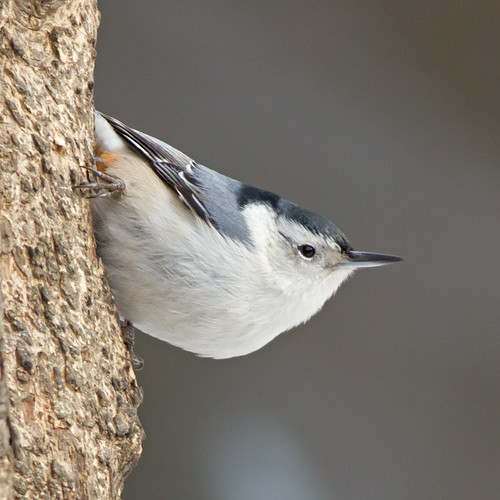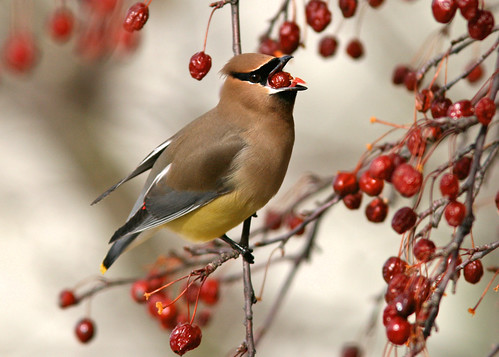Blithewold Birds: The Familiar Faces of Year-round Residents
Blithewold’s grounds are known for its spectacular plant specimens of many different shapes, colors, and varieties. Predictably, as flora and fauna often come hand and hand, Blithewold is home to hundreds of birds during all seasons in the East Bay.
The days have begun to shorten and the temperatures are dipping. By now, Blithewold has said goodbye to its flashy summer vacationers – the colorful Baltimore Orioles, Grosbeaks, Hummingbirds, and Warblers, Buntings, and Tanagers have all departed for warmer winter locales, with the last stragglers passing through until early November.
During this time of year, a stroll through the grounds will still reveal plenty of feathered activity. Fall and winter showcase some of Rhode Island’s stalwarts. These birds are constant fixtures on Blithewold’s grounds and are well-suited for life among the gardens from the hottest days of the summer to the most biting days of winter.
A White-Breasted Nuthatch pauses to take a look around.
One of the most abundant species is the White-Breasted Nuthatch. These spunky birds are easy to spot, often seen creeping down tree trunks on the property-especially in the fall when the leaves start to drop. Their back and wings are a steely blue-gray color with black wing tips. Their chests and faces are stark white with a buff or chestnut underbelly. Males sport a sharp black cap, while the cap on females might be slightly muted. They can often be seen probing bark for snacks or whacking open a seed with their pointed beaks. Nuthatches are also easy to identify by sound-they repeat a nasally call as they flit from tree to tree.
Tufted Titmice (like the one pictured above) dine primarily on seeds and leftover fruits in the fall and winter months.
Two other Blithewold perennials are Tufted Titmice and Black-Capped Chickadees, which often flock together in the fall and winter months. Tufted Titmice are blue-gray with white chests and buff sides. They have perky little crowns on their heads (the “tuft”) that can stick straight up or lie more relaxed.
Black-capped Chickadees are known to be rather bold and inquisitive despite their size.
Black-capped Chickadees are particularly small birds with large heads and a namesake black cap and bib, light gray backs, a white chest, and buff sides. Both have a familiar “chickadee-dee-dee-dee” call that can often be heard when walking the grounds. These birds are very curious and are known to investigate visitors from branches overhead. These, along with Nuthatches, can be seen all over the property, especially in the Bosquet.
A Cedar Waxwing happily gobbles up a piece of fruit.
Not to be overlooked, Blithewold is also a favorite spot for the elegant Cedar Waxwing. They gather in large flocks in various fruiting shrubs and trees on the property as well as near the Water Garden, where they descend from time to time to catch insects and bathe at the water’s edge. The tan-gray crested birds gather in flocks and have eye-catching black masks, red “wax” wingtips, and yellow underbellies.
Although they are around all year, autumn is an especially good time to visit the grounds to observe these and more of Blithewold’s feathered inhabitants. The absence of heavy foliage makes spotting birds in trees, thickets, and gardens much easier. Next time you take a walk through, keep your eyes and ears open for appearances by these airborne year-round residents!




